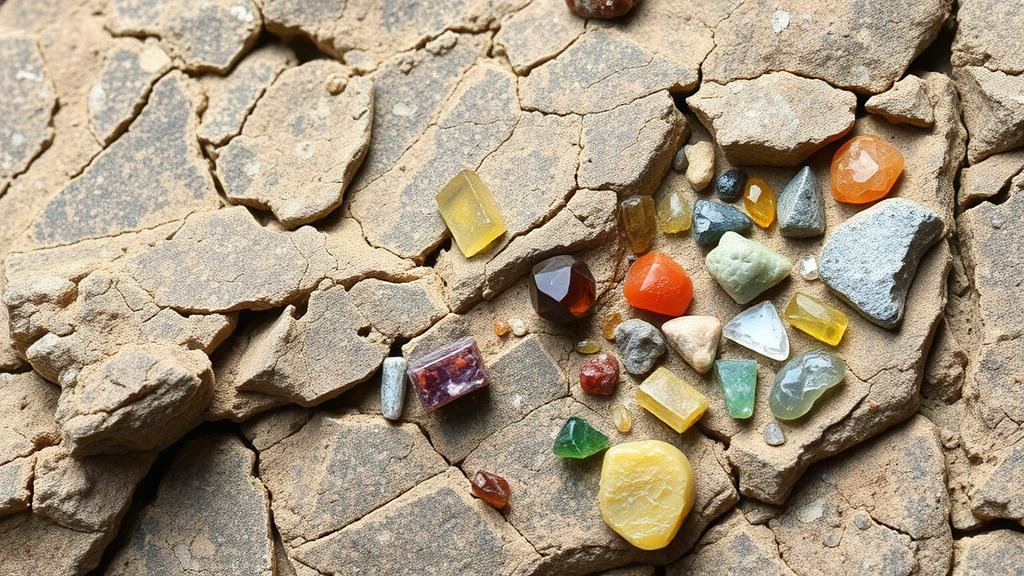Identifying Ore-Forming Minerals in Brecciated Rock Formations
Identifying Ore-Forming Minerals in Brecciated Rock Formations
Brecciated rock formations, characterized by their angular fragments fused together, often serve as significant sources of ore-forming minerals. Recognizing these minerals requires a comprehensive understanding of mineralogy and geology, as well as practical fieldwork techniques. This article will explore methods for identifying ore-forming minerals in brecciated rocks, their significance in economic geology, and provide real-world applications of these principles.
Understanding Brecciated Rock Formations
Breccias are typically defined as sedimentary rocks that consist of angular fragments exceeding 2 mm in diameter, held together by a matrix of finer material. e rocks are often formed through processes such as tectonic activity, volcanic eruptions, or sedimentary processes. They are important geological formations as they can host economically valuable minerals.
Common environments where brecciated rocks can be found include:
- Fault zones
- Volcanic pits and craters
- Submarine environments
Identifying Ore-Forming Minerals
Ore-forming minerals in brecciated rocks can vary widely, but certain minerals are of particular interest due to their economic value. The identification process involves a combination of visual inspection, chemical analysis, and sometimes, advanced imaging techniques.
Key Ore-Forming Minerals
Several key minerals are commonly associated with breccias, including:
- Gold (Au): Often found in quartz-hosted breccias, gold can indicate hydrothermal activity.
- Copper (Cu): Often associated with malachite and azurite in oxidized zones of breccias.
- Silver (Ag): Commonly found in association with lead and zinc in sulfide-rich breccias.
- Iron Ore (Fe): Hematite and magnetite may fill voids within breccias, particularly in sedimentary environments.
Techniques for Mineral Identification
Effective identification of ore-forming minerals typically combines both field and laboratory methods. Here, we will discuss key techniques used by geologists.
Field Techniques
Fieldwork is indispensable in identifying ore-forming minerals. Important methods include:
- Visual Inspection: Field geologists assess the color, texture, and mineral content of rock fragments.
- Hand Lens Analysis: A hand lens can aid in examining finer details such as crystal systems and inclusions.
- Geological Mapping: Rock types and mineralization patterns can be documented to guide further exploration.
Laboratory Techniques
Once samples are collected, various laboratory techniques can be employed to confirm mineral identity:
- X-Ray Diffraction (XRD): Used to determine the crystalline structure of minerals, providing detailed identification.
: Offers high-resolution images of minerals, allowing for in-depth analysis of surface features. - Chemical Assays: These tests quantify the concentration of valuable metals in ore samples, aiding in determining economic viability.
Case Studies
Several notable case studies illustrate the identification of ore-forming minerals within brecciated rock formations:
- Gold Deposits in Nevada: In Nevadas Carlin trend, brecciated formations have been critical for gold extraction, with hydrothermal processes leading to significant mineralization.
- Copper Breccia in Chile: Brecciated zones in Chiles copper mines have revealed rich ore bodies, primarily containing chalcopyrite and bornite.
Conclusion
Identifying ore-forming minerals in brecciated rock formations is a complex but rewarding process that incorporates various geological, field, and laboratory techniques. The knowledge acquired through understanding these formations not only enhances our comprehension of geological processes but also informs economically beneficial mining operations. Armed with the right skills and tools, geologists can unlock the potential hidden within these unique rock types.
For practitioners in the field, continuous education on the latest techniques and technologies is essential. Engaging in geological surveys, attending mineral shows, and participating in research can pave the way for successful mineral identification and recovery.



